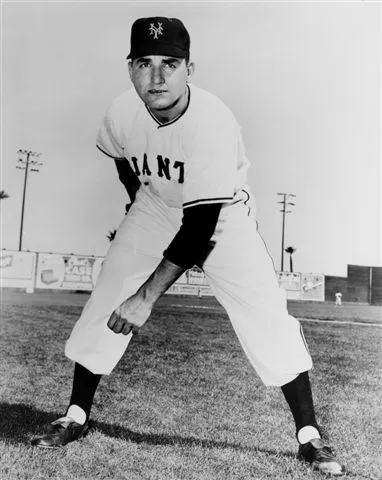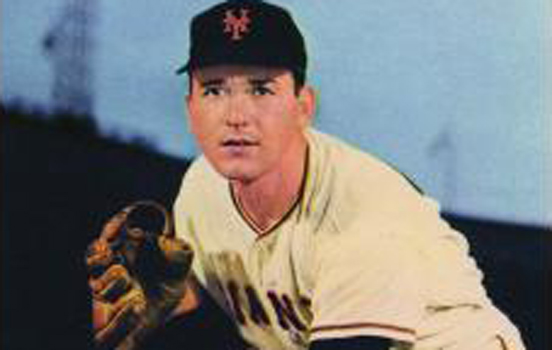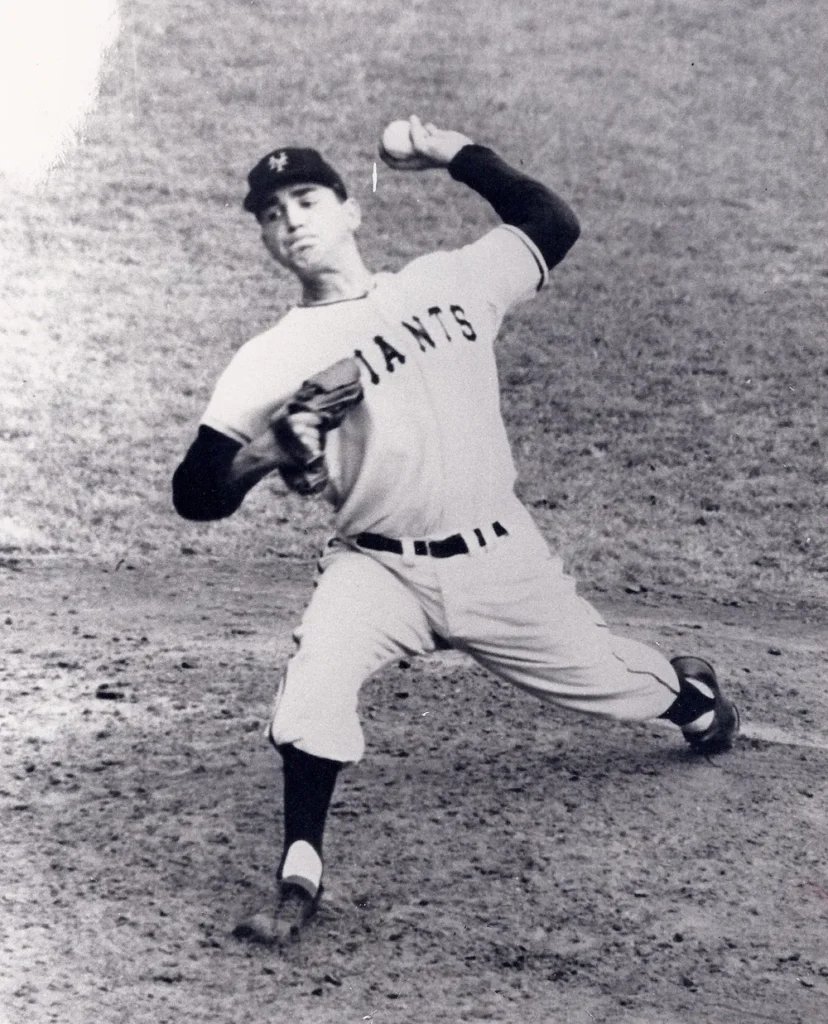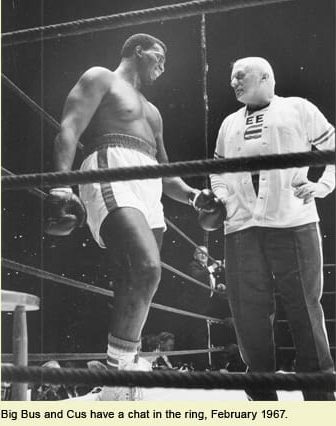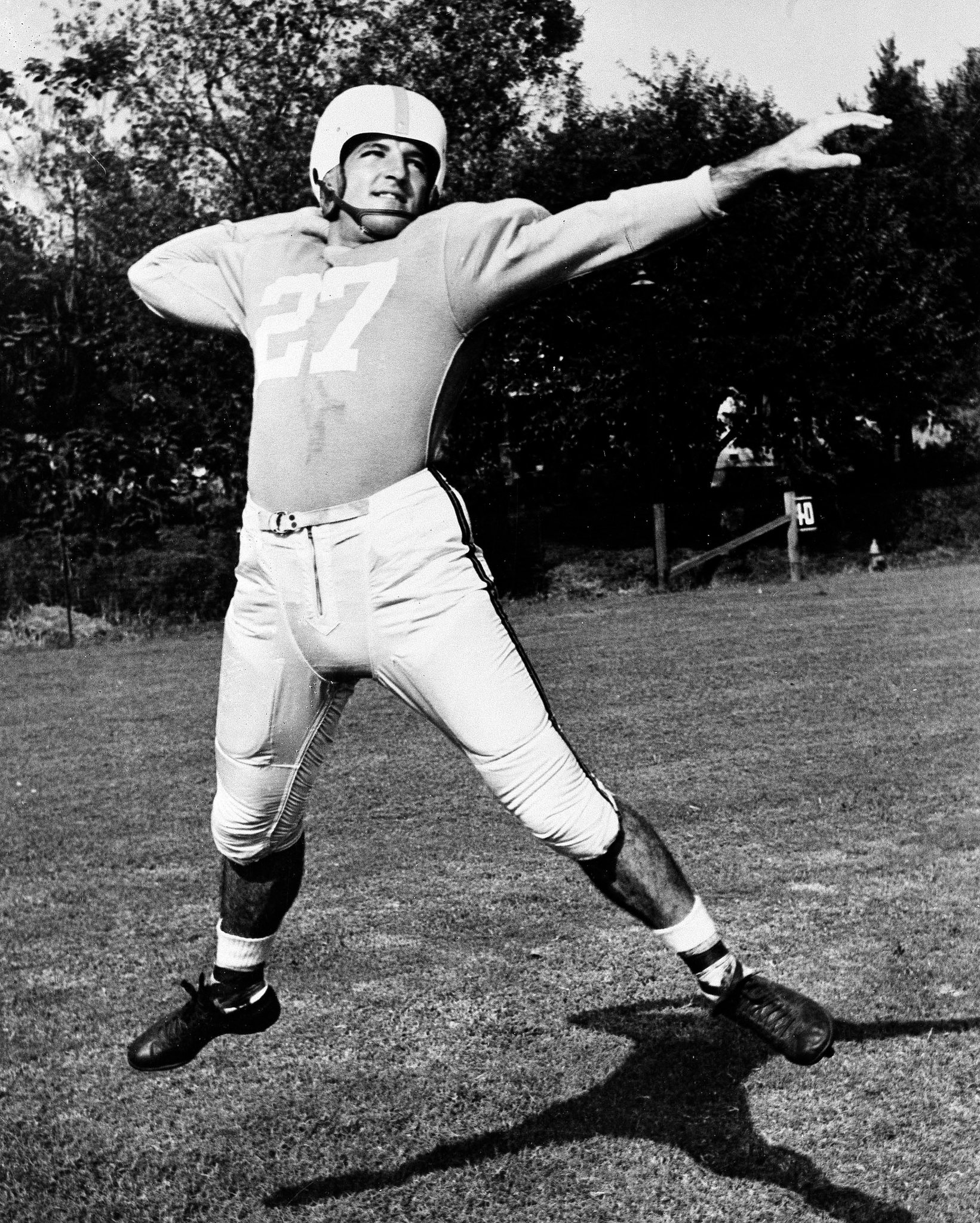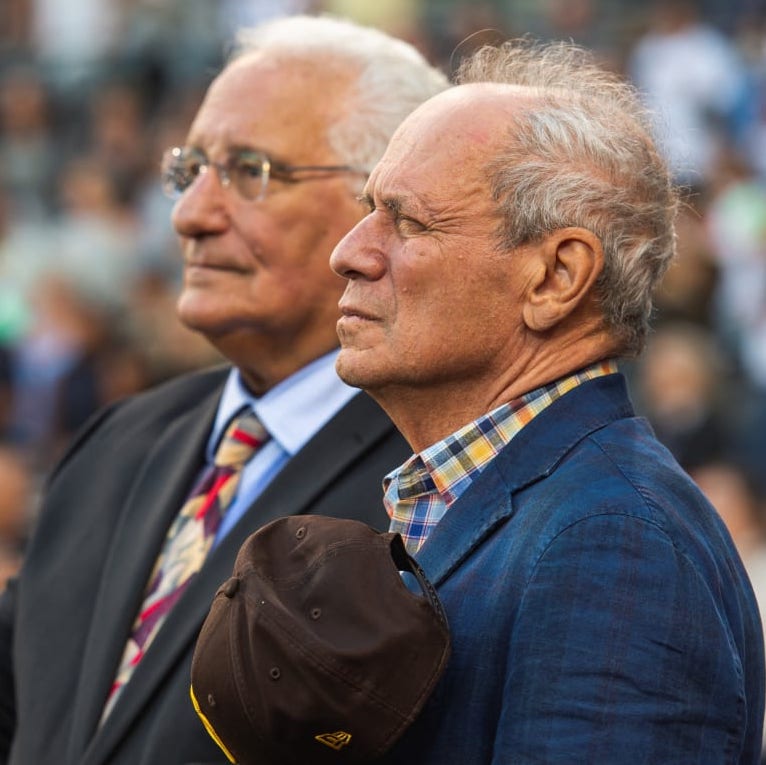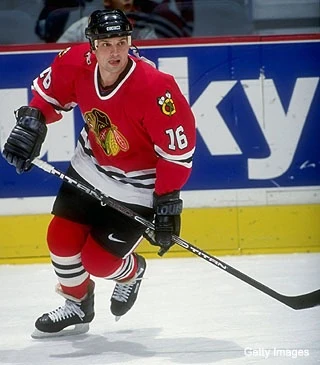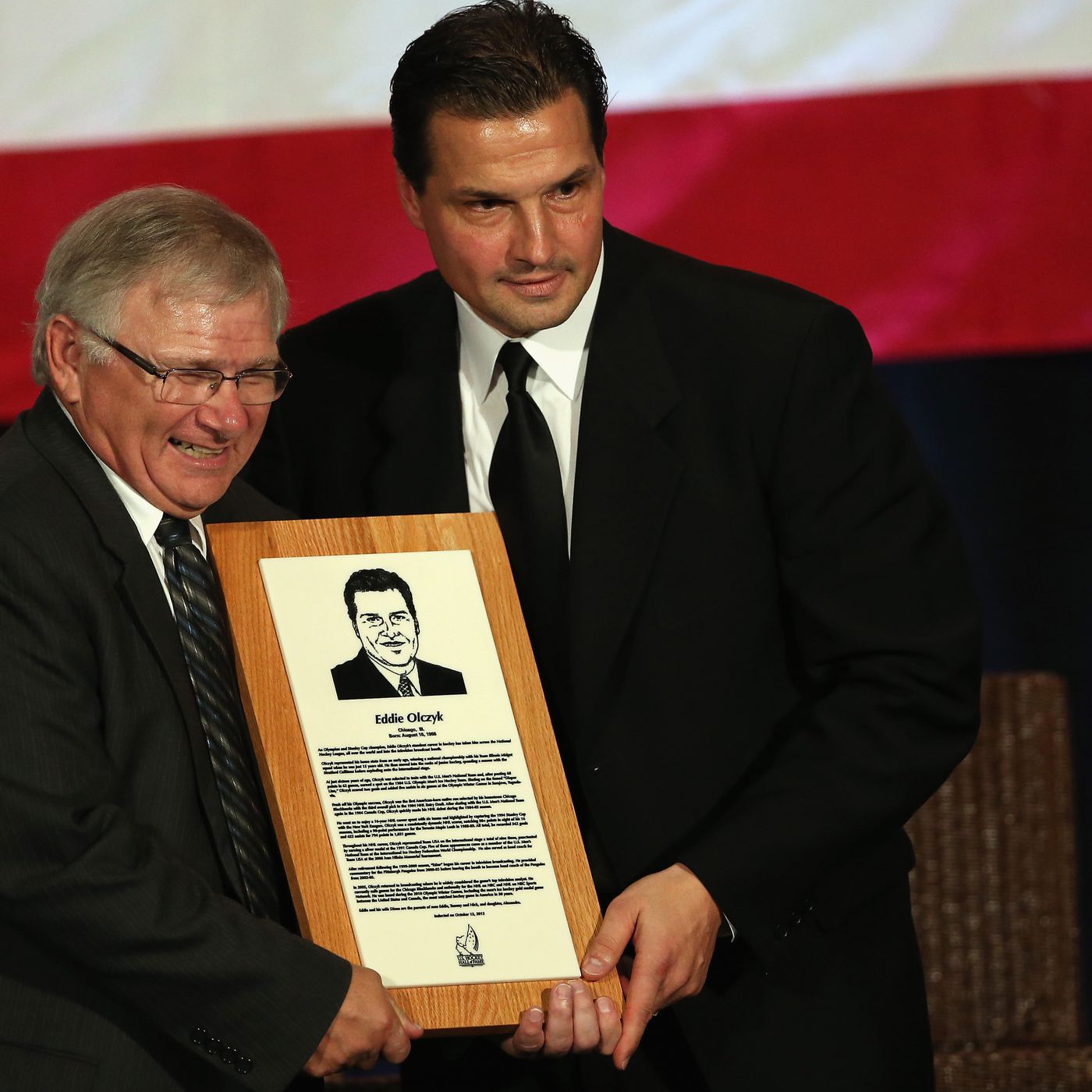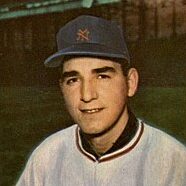
Johnny Antonelli
Baseball
Antonelli’s love for professional baseball kept him in the game throughout his life in various capacities. The native Memphian was a player, coach, manager, and instructor.
He began his pro baseball career in 1935 when he signed with the Chicks straight out of Catholic High School. Antonelli, who was both a pitcher and an infielder, later advanced to the major leagues and played in 135 games with the St. Louis Cardinals and Philadelphia Phillies in 1944 and 1945.
Although he left baseball for private practice, it was forever in his heart, and he returned as manager of the Memphis Blues from midway through the 1969 season through the 1972 season when the Class AA franchise was a part of the Mets farm system. With the Blues, Antonelli was involved in two Texas league division titles in 1969 and 1970. After leaving Memphis in 1972, he was manager of the Class AAA Tidewater team in the International Association, where he stayed for two years.
He completed his twelve years as a manager, with two years as leader of the Jackson, Mississippi, Mets in 1975 and 1976. He also worked as instructor for the New York Mets farm system. Memphis’s own John Antonelli, a man whose love for the game made him a true baseball “lifer.”
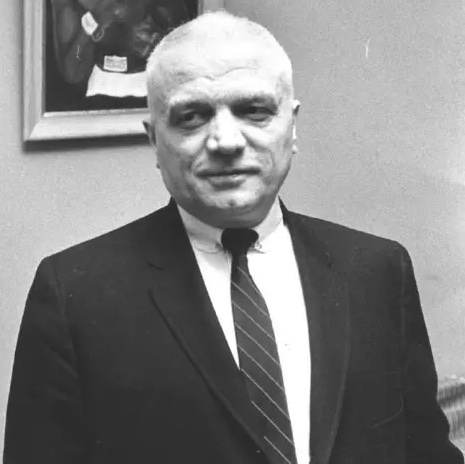
Cus D’Amato
Boxing and Coaching
Cus D’Amato earned a reputation as one of the most forthright and honest men in boxing. He guided Floyd Patterson and Jose Torres to world titles and was instrumental in launching Mike Tyson’s career. Top trainers Teddy Atlas, Kevin Rooney and Joe Fariello all learned their trade from D’Amato.
Born in 1908 in New York, D’Amato grew up as one of five brothers and learned to fight in the streets. At the age of 22, he opened the Empire Sporting Club with Jack Barrow at the Gramercy Gym. The purpose of the club was to develop young boxers. D’Amato was devoted to the gym and actually lived there for years. He was very attentive to his boxers, and his belief in his young stars was important to their success.
He built the neophyte Patterson into an Olympic gold medal winner and then world heavyweight champion, and he later guided Jose Torres to the light heavyweight championship. Both Torres and Patterson continued responsible careers after boxing, Torres as a writer and member of the New York State Athletic Commission, Patterson most recently as head of the New York State Athletic Commission.
Once Patterson won the championship, D’Amato carefully selected his opponents both with an eye towards maximizing revenues for his fighter and thwarting the International Boxing Club (IBC). Although it meant bypassing many top challengers, D’Amato refused to match his fighter in any bout promoted by the powerful but corrupt IBC. The IBC was eventually found to be in violation of anti-trust laws and was dissolved. However, D’Amato’s stance had the unintended effect of decreasing interest in boxing because Patterson fought infrequently and did not face many top contenders.
After Patterson’s and Torres’s careers had ended, D’Amato worked in relative obscurity for some years, surfacing briefly as a possible trainer for Wilt Chamberlain when the basketball great considered going into the ring. D’Amato then moved to Catskill, New York, where he opened a gym. He began to work with Mike Tyson who was in a nearby reform school. D’Amato did much to develop Tyson into a top heavyweight contender, but he died in 1985 before Tyson became the youngest world heavyweight titleholder in history.
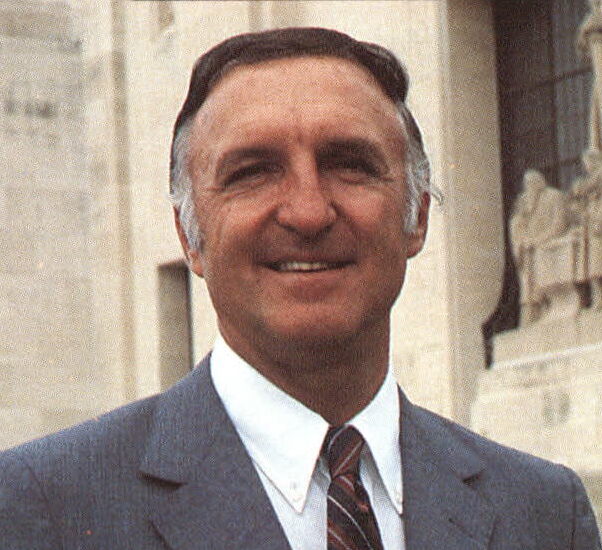
Hank Lauricella
Football Player and Hall of Fame Coach
A tailback in College Football Hall of Fame Coach Gen. Robert Neyland’s single-wing offense, Hank Lauricella emerged as one of the first true star players in the history of Tennessee football.
Born Oct. 9, 1930, in Harahan, La., he picked the Volunteers over home state schools LSU and Tulane, partly because Neyland still ran the single wing, when many programs had abandoned it for the newly popular “T” formation.
His prowess on both sides of the ball earned him the nickname “Mr. Everything” at Tennessee. On offense, he called the plays and was a threat both with his arm and his legs, rushing for 139 yards and a touchdown while completing 29 passes for 430 yards and six touchdowns in his initial season of action. On the defensive side of the football, he started at safety and was also Tennessee’s primary kick and punt returner and handled the punting duties.
In 1950, Lauricella ran for 575 yards, averaging 4.7 per carry and four touchdowns while throwing for five more scores and 364 yards. Lauricella earned All-SEC honors as the Volunteers went 10-1 in the regular season and were named National Champions by the Dunkel Index before earning a bid to the Cotton Bowl.
In the 1951 Cotton Bowl against Texas, Lauricella set up Tennessee’s first score with one of the most memorable runs in school history. From the Vols’ 20-yard line, Lauricella weaved through the Longhorns’ defense and reversed field three times before finally being brought down at the Texas 5. The 75-yard run led to the Vols’ first touchdown in a 20-14 win. Lauricella finished with 131 yards on the day and was inducted into the Cotton Bowl Hall of Fame in 2005.
Lauricella saved the best for his senior season in 1951, becoming Tennessee’s first Heisman Trophy runner-up. Lauricella averaged more than seven yards per carry that season, finishing with 881 yards as the Volunteers earned the program’s first Associated Press National Championship and its first SEC title since 1946. He earned his second All-SEC nod and was named a unanimous First Team All-American.
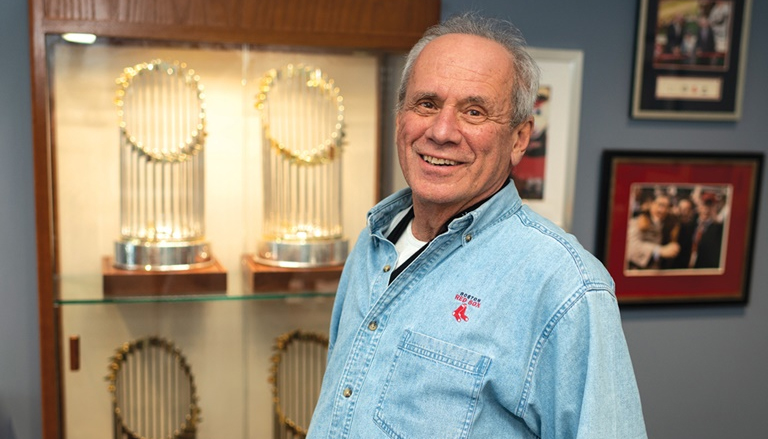
Larry Lucchino
Baseball Player and Executive
Larry Lucchino is a prominent baseball executive known for his influential roles with the San Diego Padres and Boston Red Sox. Born on September 16, 1946, in Washington, D.C., Lucchino has had a lasting impact on Major League Baseball, especially in terms of stadium development and team leadership.
Lucchino began his career as a lawyer and worked with the Baltimore Orioles as an executive in the 1980s. However, he is perhaps best known for his time with the San Diego Padres (1995–2001), where he served as president and CEO. During his tenure, he was instrumental in the development of Petco Park, which became one of the most admired ballparks in the MLB.
Lucchino’s most notable legacy came with the Boston Red Sox, where he was president and CEO from 2002 to 2015. Under his leadership, the Red Sox won the 2004 World Series, ending an 86-year championship drought, which was a moment of immense cultural significance in Boston. Lucchino also played a key role in the renovation of Fenway Park, helping preserve the historic stadium while modernizing it for the 21st century.
While Lucchino is not a Hall of Famer as a player, he was honored with the John H. Johnson President’s Award in 2021, an accolade given to individuals who have made significant contributions to the game of baseball. This recognition acknowledged his far-reaching influence as a team executive.
Lucchino retired from his executive position with the Red Sox in 2015 but remains a key figure in baseball history, known for his business acumen, leadership, and vision for the future of the sport.
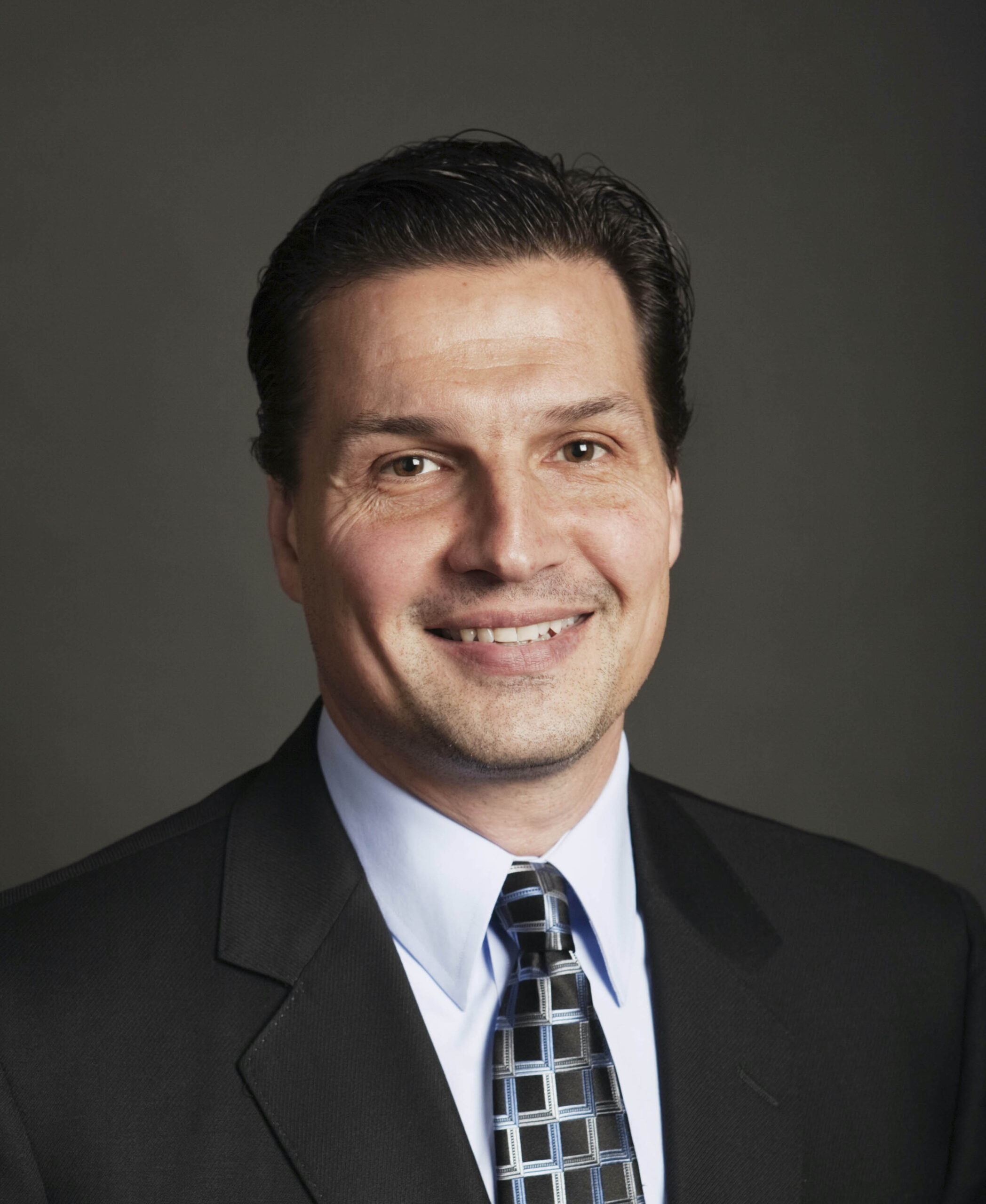
Eddie Olczyk
Hockey
Eddie Olczyk was the third overall pick of the 1984 NHL Entry Draft by the Chicago Blackhawks and enjoyed a 16-year professional career.
A member of the 1994 Stanley Cup champion New York Rangers, Olczyk’s career was split between six teams, including the Chicago Blackhawks (1984-1987, 1998-2000), Toronto Maple Leafs (1987-1991), Winnipeg Jets (1991-1992, 1995-96), New York Rangers (1992-1995), Los Angeles Kings (1996) and Pittsburgh Penguins (1996-1998).
All total, he notched 342 goals and 452 assists for 794 points in 1,031 games. Additionally, Olczyk represented the U.S. nine times on the international stage during his career, including as a member of Team USA at the 1984 Olympic Winter Games in Sarajevo, Yugoslavia, as a 17-year-old, where he skated on the famed “Diaper Line.” He also helped Team USA to a second-place finish in the 1991 Canada Cup.
A native of Palos Heights, Ill., Olczyk is the current lead game analyst for NHL on NBC and NHL on NBC Sports Network. Olczyk was also heard during the 2010 Olympic Winter Games in Vancouver, including the gold-medal men’s ice hockey contest, which was the most-watched hockey game in America in 30 years.
Olczyk, who spent parts of two seasons behind the bench as head coach of the Pittsburgh Penguins from 2003-05, presently serves as the game analyst for Chicago Blackhawks television broadcasts.
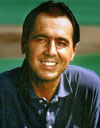
Steve Palermo
Baseball Umpire
From the time he began his career as an American League Umpire in 1977, Steve Palermo was widely regarded as one of the best umpires in the game. In 15 years on the field, he brought a boundless energy and enthusiasm to a game that he loved.
Steve Palermo was born October 9, 1949, in Worcester, Massachusetts. He studied Education at Norwich University, Leicester Junior College and Worcester State College before attending the Umpire Development Program in 1972. His minor league career included work in the N.Y. -Penn., Carolina, Eastern and American Association Leagues. He also worked winter baseball in the Florida Instructional, Dominican Republic and Puerto Rican Leagues. In 1977, after only five years in the minor leagues, Steve joined the Major Leagues as an American League Umpire.
His career highlights include two of the most famous games in N.Y. Yankees history. In 1978, he worked the Yankees one game playoff against the Boston Red Sox in Fenway Park to determine the Eastern Divisional winner. In fact, it was Palermo, serving as the third base umpire, who signaled “fair ball” when Bucky Dent hit the game winning home run. On July 4, 1978 he worked behind the plate for Dave Righetti’s no-hitter against the Red Sox at Yankees Stadium.
His career as an umpire also includes the 1983 World Series, four American League Championship Series (1980, 1982, 1984, 1989) and the 1986 All-Star Game. In August 1991, The Sporting News ranked Steve number 1 among American League Umpires for overall performance.
In early July 1991, it seemed that Palermo’s umpire career might have ended, but everyone knows it is difficult to win an argument with an umpire and Steve refuses to lose this one. On July 7, 1991, Steve and several friends were dining after a Texas Rangers game when they were alerted that two waitresses were being mugged in the parking lot. In an attempt to apprehend the assailants, Steve suffered a bullet wound to his spinal cord, resulting in instant paralysis to the lower extremities.
On December 1, 1992, the Steve Palermo Foundation for Spinal Cord Injuries (SPF/SCI) formally opened their doors. The foundation was formed to fund research for the discovery of a cure for paralysis while also providing hope and support to those with spinal cord injuries and their families…helping them get “One Step Closer to Home.”
